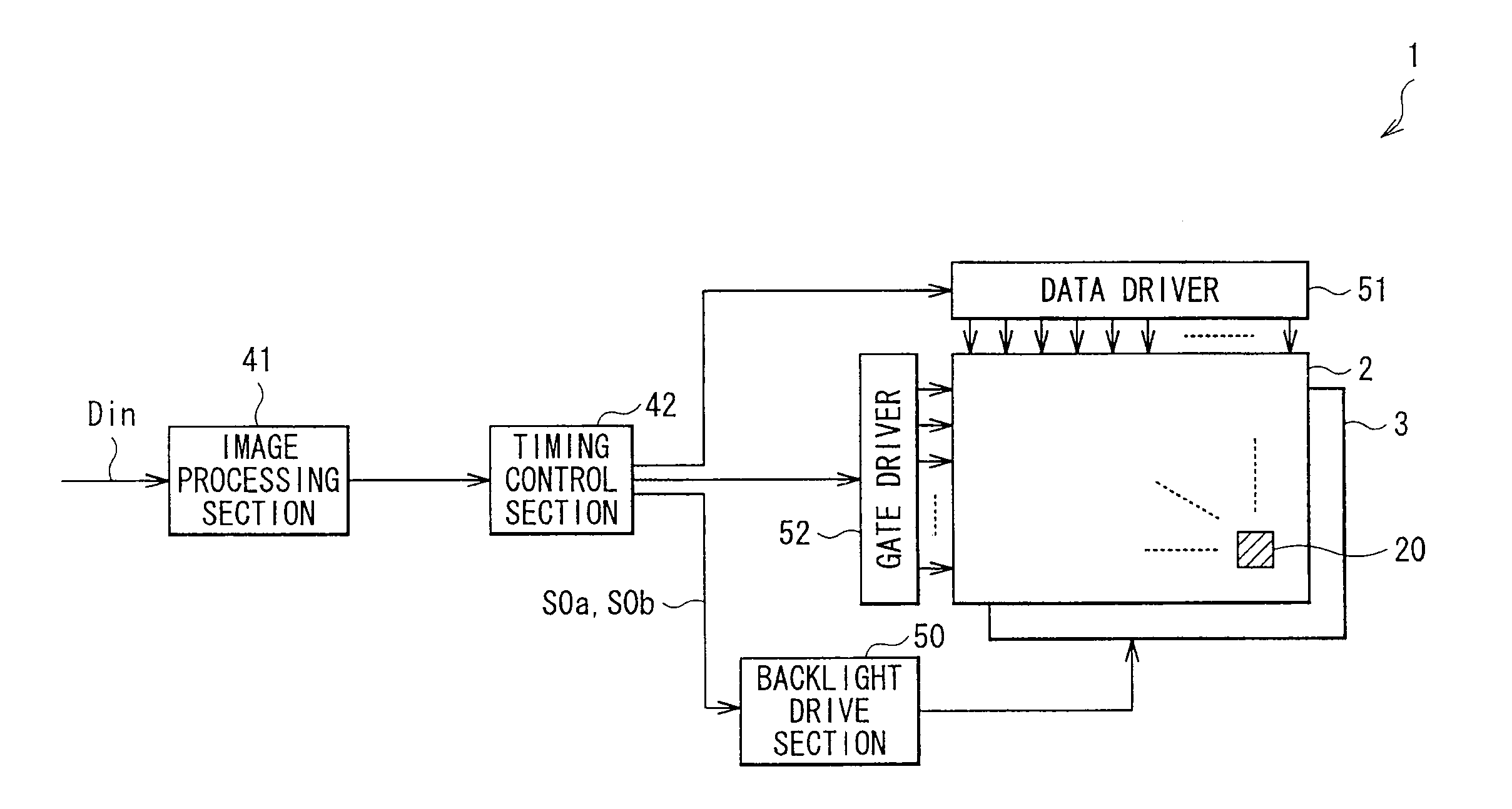Liquid crystal display device
a display device and liquid crystal technology, applied in the field of liquid crystal display devices, can solve the problems of increasing the number of device components, increasing the cost, and not being able to achieve good specific effects
- Summary
- Abstract
- Description
- Claims
- Application Information
AI Technical Summary
Benefits of technology
Problems solved by technology
Method used
Image
Examples
embodiment
(Entire Configuration of Liquid Crystal Display Device)
[0031]FIG. 1 is a block diagram showing the configuration of a liquid crystal display device, i.e., liquid crystal display device 1, in the embodiment of the invention. The liquid crystal display device 1 is of a so-called transmissive type, and is configured to include a backlight 3 (light source section), and a transmissive liquid crystal display panel 2. This liquid crystal display device 1 is also provided with an image processing section 41, a timing control section 42, a backlight drive section 50, a data driver 51, and a gate driver 52. Among these device components, the timing control section 42, the backlight drive section 50, the data driver 51, and the gate driver 52 are all a specific example of a “drive section” in the embodiment of the invention.
[0032]The backlight 3 is a light source from which a light is directed toward the liquid crystal display panel 2. In this example, the backlight 3 is of a direct-light type...
modified example
[0073]Described next is a modified example of the embodiment described above. Herein, any device component same as that in the above embodiment is provided with the same reference numeral, and is not described again if appropriate.
[0074]FIG. 12A is a schematic diagram showing the configuration of a backlight, i.e., backlight 3A, in the modified example, and FIG. 12B is a timing chart of the turn-ON operation (control operation) of this backlight 3A.
[0075]As illustrated in FIG. 12A, the backlight 3A of this modified example is configured to include a light guide plate 33A, and LEDs 31A and 31B different in type. The light guide plate 33A forms the whole emission region 30. To be specific, the LED 31A (upper light source) is disposed along the edge of the light guide plate 33A on the side of the upper emission region 301, and the LED 32A (lower light source) is disposed along the edge of the light guide plate 33A on the side of the lower emission region 302. In other words, this backl...
PUM
 Login to View More
Login to View More Abstract
Description
Claims
Application Information
 Login to View More
Login to View More - R&D
- Intellectual Property
- Life Sciences
- Materials
- Tech Scout
- Unparalleled Data Quality
- Higher Quality Content
- 60% Fewer Hallucinations
Browse by: Latest US Patents, China's latest patents, Technical Efficacy Thesaurus, Application Domain, Technology Topic, Popular Technical Reports.
© 2025 PatSnap. All rights reserved.Legal|Privacy policy|Modern Slavery Act Transparency Statement|Sitemap|About US| Contact US: help@patsnap.com



